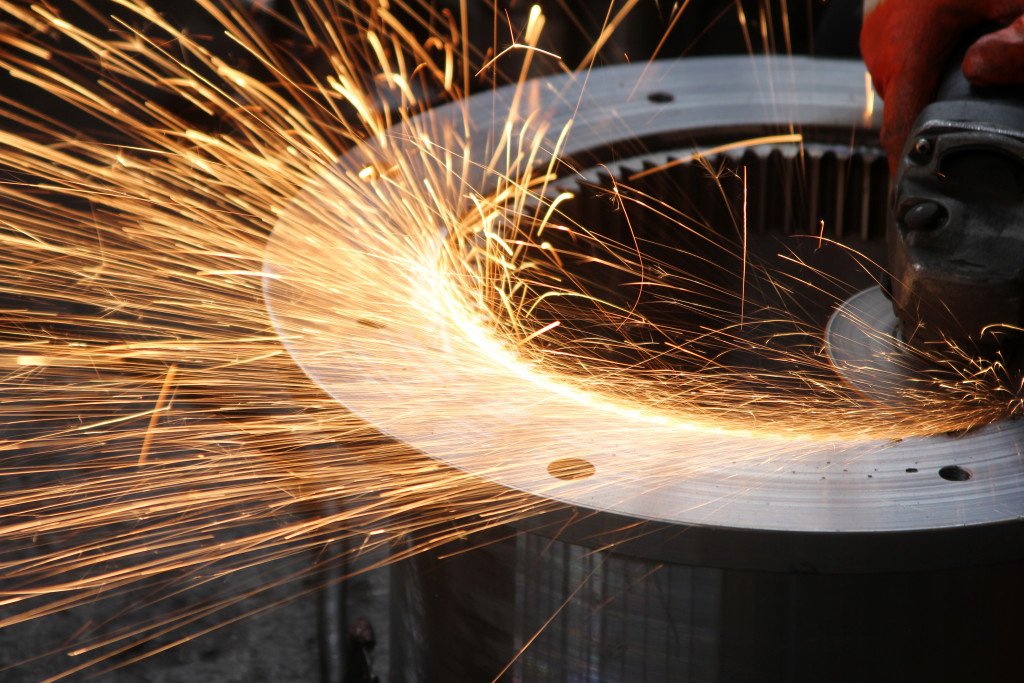Humankind has sought new methods to produce, refine, and use metal since the Bronze Age. With tens of thousands of kinds and grades of metals to choose from, human imagination limits the endless possibilities of different alloys and metals. Metals have served as a cornerstone for many businesses, especially in metal fabrication and the manufacturing industry. They were at the heart of the Industrial Revolution.
As a result, metals helped cultures and civilizations flourish. Metal is all around us, whether in the form of construction materials or everyday home items. In this post, you learn the five metals among the most widely utilized globally, their applications, and some interesting facts about each one.
Steel
There are no impurities or residues in steel since it is made of an iron alloy with around 1% carbon and is usually free of iron impurities. Despite its strength, steel is a heavy, dense metal that is susceptible to corrosion—because of this, building and maintaining all-steel buildings can be challenging. The addition of carbon to iron not only mitigates these weaknesses but strengthens the substance.
The high strength-to-weight ratio of steel over other metals makes it possible to produce tiny yet robust steel components. Steel is the most widely used metal globally, with over 3,500 distinct grades and over 2 billion tons produced each year. When various features and varied qualities of those elements are combined to make steel alloys, it results in a wide range of steel variations. With that said, take a look at each variation:
Steel Alloy
Chromium, manganese, nickel, tungsten, or vanadium are added to iron to create alloy steel. Each alloy element adds unique characteristics to the combination, resulting in alloy steel tailored to meet specific needs. There are many different ways to modify a particular alloy to meet the requirements of a project, like increasing the material strength or creating a product that is more resistant to wear and corrosion. Due to its low cost of production, many industries extensively utilize alloy steel.
Stainless Steel
Iron, carbon, large quantities of chromium, and remnants of other metals make up stainless steel, highly corrosion-resistant alloy steel. It’s a versatile substance that’s found usage in a broad range of residences. Stainless steel is ideal for making food-contact items such as kitchen utensils, tables, sinks, and other furniture since it does not corrode readily. Computer Numerical Control (CNC) machining also utilizes stainless steel to create various materials such as aftermarket automotive parts and aviation.

Steel, Aluminum, and Carbon
Carbon steel is an iron-carbon alloy that can also include other metals, such as chromium or nickel. The quantity of carbon in an alloy is used to classify it as low, medium, or high carbon steel. The more carbon that goes into the steel-making process, the more challenging the finished alloy will be. Smaller quantities of carbon, on the other hand, result in a more cost-effective alloy. When it comes to structural construction, carbon steel is best recognized as a structural building material. Still, it’s also utilized to make tools and mechanical parts.
Steel for Tools
Manufacturers also use steel to make cutting, drilling, and other shock-resistant tools because of its hardness. A combination of cobalt, molybdenum, tungsten, and vanadium gives iron its hardness. Construction, shipbuilding, and the automobile sectors all use tool steel. They are mainly used for machining and alteration of various steels.
Iron
Iron is a great and widely used metal, making up around 5 percent of the Earth’s crust and ranking as the universe’s sixth most common element. Unalloyed iron is a volatile metal that combines readily with oxygen in the atmosphere to produce iron oxide when exposed to high temperatures. It is often alloyed with other elements to make steel, designed to be more dimensionally stable.
Iron is used in cookware due to its porous surface, avoiding sticking when coupled with hot oil. Cast iron is used to make wood stoves because of its very high melting point. Because iron is a heavy metal, it has a high degree of stiffness. It also dampens vibrations, making it ideal for use in large machine frames and bases.
After 60 years, humankind has been able to keep up with the market by refining metal-refining techniques by experimenting with various wires, gases, and procedures. Fabricated metal constructions are made by ordering them and specifying the metals you require. Whether you need corrosion-resistant components, stronger ones, or ones with a silvery sheen, there is a metal and manufacturing method available to meet your needs.

